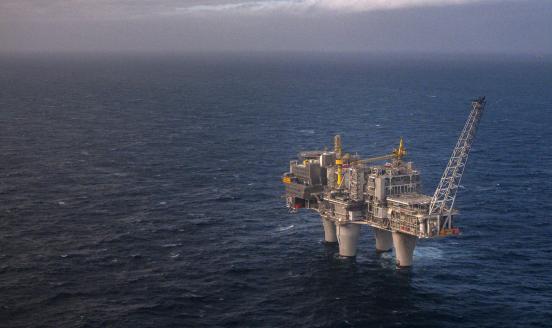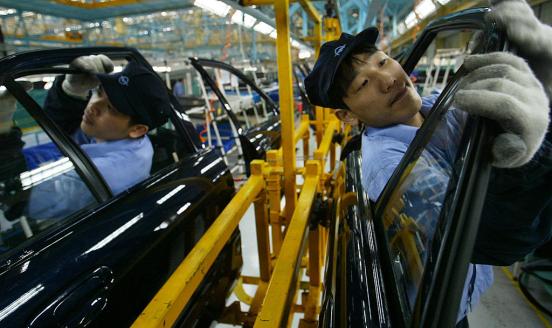Making low-carbon technology support smarter
This Policy Brief describes the interaction between three approaches that are effective in driving innovation in low-carbon technologies. Based on tha
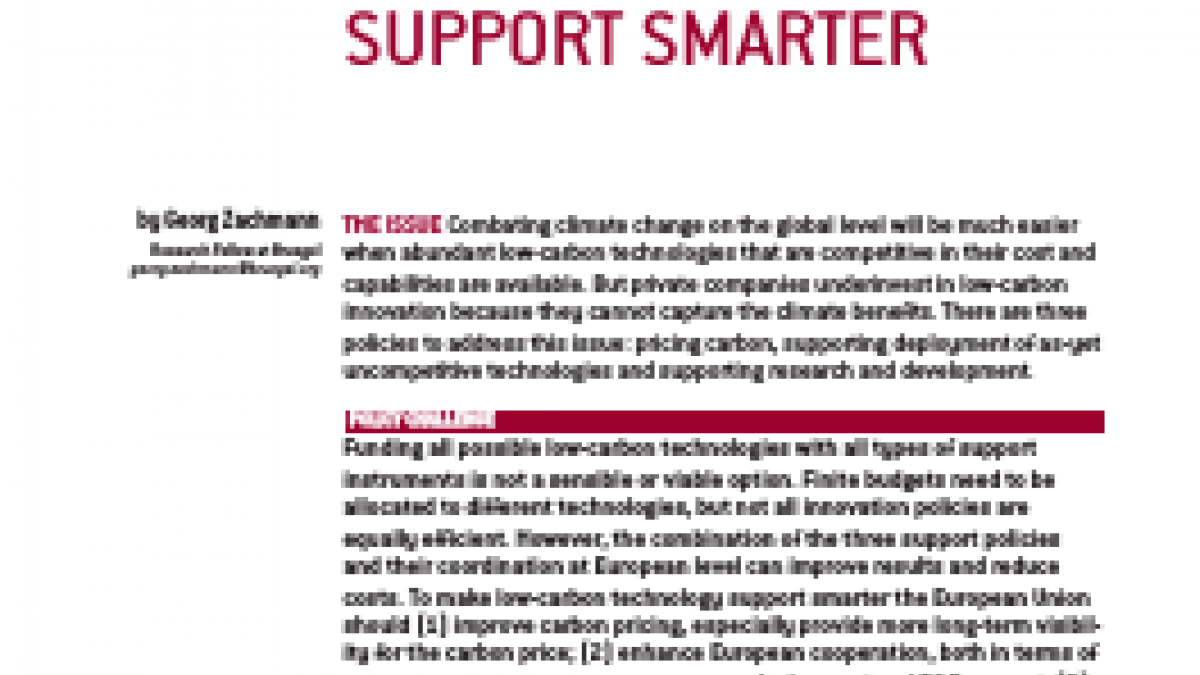
The issue
Combating climate change on the global level will be much easier when abundant low-carbon technologies that are competitive in their cost and capabilities are available. But private companies underinvest in low-carbon innovation because they cannot capture the climate benefits. There are three policies to address this issue: pricing carbon, supporting deployment of as-yet uncompetitive technologies and supporting research and development.
Policy challenge
Funding all possible low-carbon technologies with all types of support instruments is not a sensible or viable option. Finite budgets need to be allocated to different technologies, but not all innovation policies are equally efficient. However, the combination of the three support policies and their coordination at European level can improve results and reduce costs. To make low-carbon technology support smarter the European Union should (1) improve carbon pricing, especially provide more long-term visibility for the carbon price; (2) enhance European cooperation, both in terms of deployment and R&D support; (3) balance support for deployment and RD&D; and (4) develop a more methodological approach to technology selection.
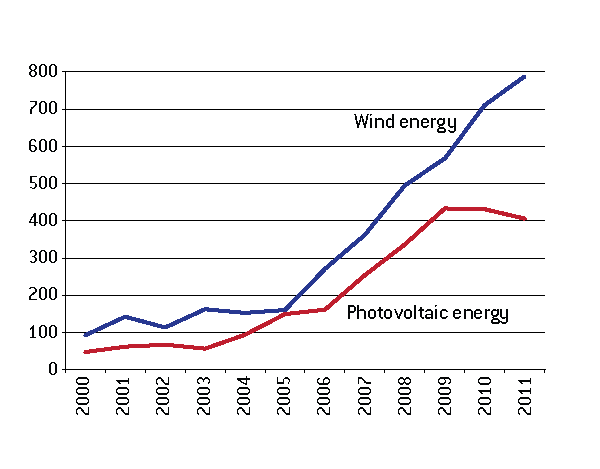
Source: Bruegel.
This Policy Brief summarises previous papers that have benefited from funding under the Simpatic project (http://www.simpatic.eu). Research assistance by Burak Turkoglu and Augustin Lagarde is acknowledged.
References can be found in the PDF version of the Policy Brief which is available for download at the bottom of this page.
While the specific effects of increasing concentrations of greenhouse-gases in the atmosphere on the climate system cannot be accurately predicted, there is a non-trivial risk that beyond some ex-ante unknown tipping points – in terms of greenhouse- gas concentration and/or global temperature – irreversible and highly expensive events might unfold. This calls for quick action to reduce the probability that such tipping points will be passed. Annual greenhouse gas emissions will have to be reduced dramatically before 2050. In order to stabilise carbon dioxide concentrations in the atmosphere at about 450 parts per million (ppm)1 by 2050, global emissions would have to decline by about 40-70 percent by 2050.
Such aggressive global decarbonisation requires an international agreement. Otherwise, fossil fuels not used in some countries will be used in others2. But an agreement is only feasible and stable if the benefit for each country exceeds the cost, which depends on the cost of low-carbon technologies. Consequently, reducing the cost of these technologies in Europe would not only allow cheaper domestic decarbonisation and for a competitive edge to be gained in selling these technologies overseas, but most importantly it would be a major contribution to an international agreement.
In this Policy Brief, we describe the interaction between three approaches that are effective in driving innovation in low-carbon technologies. Based on that, we provide four recommendations for making low-carbon technology support smarter: (1) improve carbon pricing; (2) improve European cooperation; (3) combine deployment and research, development and demonstration (RD&D) support; and (4) take a more methodological approach to technology selection.
Key strategies to drive low-carbon innovation
This is also true for low-carbon innovation, but supporting lowcarbon innovation involves the particular challenge of targeting innovation that brings down the decarbonisation cost. For this, there are three main policies: (i) a price on carbon, (ii) directly support public and private RD&D investment in the targeted lowcarbon technologies, and (iii) create demand for technologies to foster private innovation.Numerous policy instruments support innovation, ranging from patent protection to public research funding and public procurement, to subsidies for private investment in innovation3, but there is no consensus on a single best practise4. There are, however, conventional ‘dos and don’ts’. For example, do regularly conduct independent evaluations of innovation policies, do avoid excessive risk aversion in project selection and do determine clear triggers for cutting support5.
Pricing carbon
If companies know that they or their (potential) customers will be faced with high carbon prices in the future, they will have every incentive to invest in development of low-carbon alternatives. Calel and Dechezleprêtre (2012) provide evidence that carbon pricing in the EU has increased low-carbon patenting both by companies directly covered by the EU emissions trading system (ETS) and by companies that do not fall under the ETS6 (Figure 1). Creating the expectation of a high future carbon price has one big advantage over all other innovation policies (such as predictably tightening fuel standards) – it is completely technology neutral. At the same time, carbon pricing incentivises investment in lowcarbon power technologies (eg solar photovoltaic), energy-efficient appliances, carbon capture and storage or more resource-efficient processes (eg recycling of aluminium). Therefore, the policy challenge for the EU is to create the ‘right’ price and to make it durably credible.
But even at a ‘perfect’ EU carbon price there will still be private under-investment in low-carbon innovation, because private investors will not be able to reap the climate benefits that the lowcarbon technologies they produce have outside the EU – assuming no carbon price exists there. For example, the sale price of an innovative wind turbine in Europe could be as high as that of the next-cheapest low-carbon technology, while in Vietnam the innovator might only be able to sell it if the price stays below the cost of a coal plant. Innovators therefore face below-optimal incentives to invest in improving their designs. In addition, as with all innovation, the innovator might not be able to fully appropriate all the benefits, such as spillovers onto other innovators, and it has even been argued that these spillovers are particularly large for green technologies7. So additional support schemes are justified.
Figure 1: Share of low carbon patents by companies falling under the ETS and companies not falling under the ETS
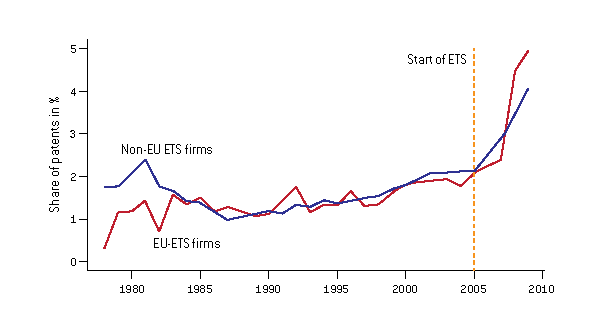
Source: Calel and Dechezleprêtre (2012). Note: start of the ETS: 2005.
Supporting deployment of as-yet uncommercial technologies
The prospect of deployment is the carrot for industry to commercialise new technologies. Long-term deployment targets – such as the EU's 20 percent by 2020 target for renewable energy8 – are helpful, not least because they incentivise innovation and investment in complementary technologies, such as storage or networks. For example, the creation of a 40 gigawatt global market for the deployment of photovoltaic panels between 2000 and 2010 arguably made a major contribution to the reduction in cost of solar cells from $5/watt to $1/watt. Zachmann et al (2014) found that increased deployment coincides with more patents in the corresponding technology (Figure 2 shows this for Germany).
There is an active discussion on how deployment can best be supported. German technology specific feed-in tariffs, for example, were very effective in creating a significant market for onshore wind, solar PV and biogas, but the costs were also significant and there was some concern that guaranteed tariffs for everyone do not sufficiently push innovation9. Other countries went for tendering schemes, renewables certificates, tax breaks or renewables-premium models. For certain sectors (such as buildings, cars or appliances), predictably tightening standards provides the prospect of deployment of as-yet uncompetitive technologies.
Deployment policies are often evaluated by the short-term cost per deployed unit of low-carbon technology10. From an innovation standpoint this is only of secondary importance because the aim is to bring down the cost of future generations of the supported technology. From an innovation standpoint, three main questions arise: (i) How predictable is future market size (eg the year-to-year decision on tax breaks in some US states is not helpful in deploying an efficient value chain)? (ii) Does the set-up remunerate innovative solutions, eg by setting feed-in tariffs that are likely to be only sufficient for next-generation technology? (iii) How openly does the policy deal with different technologies (eg German feed-in tariffs support only a narrow set of ‘proven’ technologies)?
Figure 2: Estimated impact on the number of corresponding patents of an increase in deployment of solar panels and wind turbines in Germany
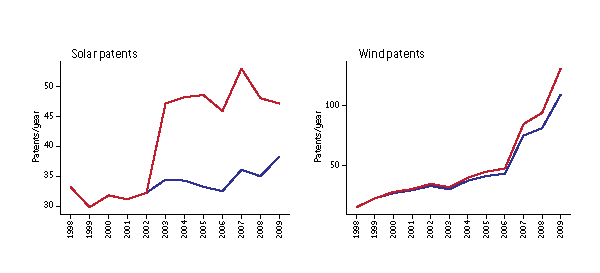
Source: Zachmann et al (2014). Note: in both panels, blue line: number of patents estimated with no policy change; red line: number of patents estimated with one standard deviation higher deployment after 2002.
Public RD&D spending and support for private RD&D
Public research is an important source of basic innovation. In addition, the publicly-funded education of researchers reduces the private sector’s cost of innovation. Furthermore, all OECD countries have specific policies to support private investment in RD&D. Zachmann et al (2014) provides evidence that increased public RD&D spending coincides with more patents in the corresponding technology (Figure 3 shows this for Germany). While some of the mechanisms work irrespective of the area of innovation (eg investment in RD&D is tax-deductible in some countries), most public funding for RD&D is explicitly or implicitly targeted at certain sectors. History shows that targeted technologies and sectors do not necessarily meet initial expectations. For example, nuclear fission, nuclear fusion and hydrogen have received significant support but have not yet achieved the hoped-for commercial break-through. So, betting all support on a single ‘silver bullet’ is too risky. The increasing diversification of the portfolio of supported technologies goes in the right direction (see Figure 4 on the next page). But the EU lacks a process that aims at optimal allocation. So a key question is: how should public spending be targeted at individual technologies or objectives? This is particularly relevant when the aim is to develop technologies that make decarbonisation cheaper, because those technologies often compete with each other. In addition, not only individual technologies (such as solar PV and onshore wind) compete for future markets, but also entire energy systems. Decarbonisation might take very different routes, such as: (i) low-carbon electricity production (from either renewables, nuclear or power plants equipped with carbon capture and storage) plus electrification of transport and heat versus hydrogen as a new carrier and storage for energy; (ii) centralisation of energy supply with strong networks versus decentralised solutions with local storage; (iii) massive reduction in energy demand versus decarbonisation of energy supply.
Figure 3: Estimated impact on the number of corresponding patents of an increase in German public RD&D for solar panels and wind turbines
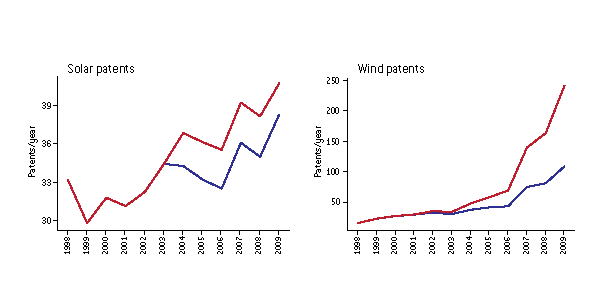
Source: Zachmann et al (2014). Note: in both panels, black line: number of patents expected with no policy change; red line: number of patents expected with one standard-deviation higher RD&D spending after 2002.
Policies working together
Public funding of RD&D, public support for deployment of lowcarbon technologies and a forward-looking carbon price can all contribute to innovation. Figure 5 on the next page illustrates the interaction. Before a technology is deployed, some basic RD&D brings down the cost to a level at which some deployment can be started. Deployment leads to learning – so the more a new technology is deployed, the lower the cost becomes. Learning can be speeded up by continuous funding of RD&D. At some point the technology will be able to compete with other technologies on the market. This point will be reached earlier (and hence encourage private investors to do more RD&D and deployment on their own) if there is a predictable carbon price.
For any given technology, one might ask what is the right timing and combination of these three major instruments to most effectively and efficiently bring down their cost.
In Zachmann et al (2014) we find that both deployment and public RD&D support matter in terms of innovation. Our results indicate that there is a benefit in combining deployment and RD&D. The patenting of wind turbine technology in particular is strongest in countries that combine strong RD&D support and deployment. Figure 6 illustrates our estimates derived for OECD countries using the example of Germany. The impact of only RD&D plus the impact of only deployment is smaller than the impact of a combination of the two. In fact, support for deployment some years after substantial investments in R&D coincided with the strongest development of corresponding patents. That would be in line with the hypothesis that it is not massive actual deployment, but the prospect of deployment, that is the carrot for industry to commercialise the technologies developed through publicly-supported R&D.
Europe's recent focus has been on deployment. Public spending on deployment of wind and solar technology has, for example, been vastly greater (about €48 billion in the five largest EU countries in 2010) than spending on RD&D support (about €315 million). This raises the question of whether this bias is the most efficient way to stimulate innovation.
Figure 4: Share of energy RD&D spending by governments in OECD Europe by technology sector
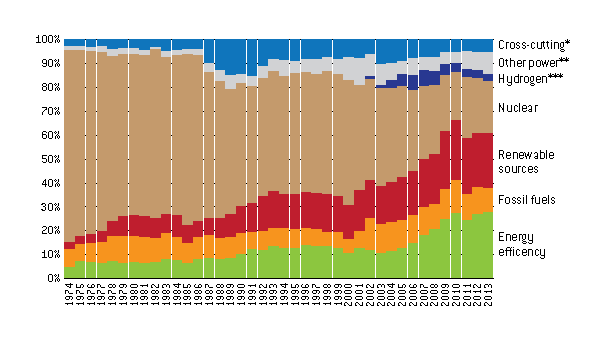
Source: IEA (2015) Estimated RD&D budgets by region. Note: * = Other cross-cutting
technologies/research; ** = Other power and storage technologies; *** = Hydrogen
and fuel cells. OECD Europe = Austria, Belgium, Czech Republic, Denmark, Estonia,
Finland, France, Germany, Greece, Hungary, Ireland, Italy, Netherlands, Norway,
Poland, Portugal, Slovakia, Spain, Sweden, Switzerland, Turkey, United Kingdom.
Figure 5: Cost reduction for renewable energy technologies
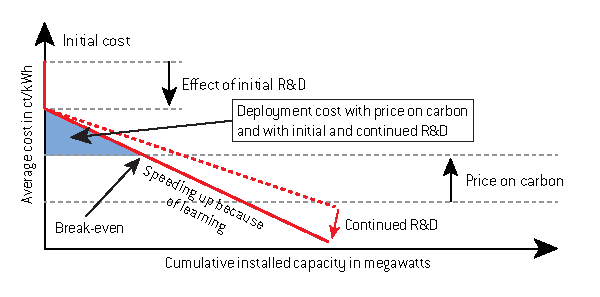
Source: Bruegel.
Figure 6: Wind turbines in Germany: estimated additional increase in patents from combining deployment and RD&D
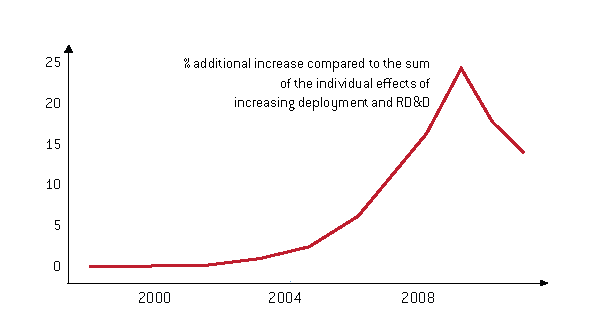
Source: Zachmann et al (2014).
Four recommendations for smarter technology support
Better carbon pricing Four recommendations for smarter technology support
The EU ETS could in principle provide a valuable signal for low-carbon investment. In its current design, about 54 billion allowances (each worth one ton of CO2) will be issued between 2015 and 206711. Given the allocation schedule over time and the expected annual emissions, allowances are likely to become scarce in the late 2020s. From then on the market will rapidly tighten. This future scarcity of allowances should translate into a high price. Market participants should anticipate the rising price and buy unused allowances today and set them aside – thus raising current prices. Consequently, the ETS would bring about a valid and forward-looking carbon price signal. However, the allowance price today does not reflect future scarcity (expected prices in 2030 are about €40 while prices today are below €10). Given that traders could buy allowances today and sell them in 2030, the low current prices indicate a lack of confidence in the instrument, which can be explained by volatile policies driving the supply and demand of allowances. Accepting 1.4 billion international carbon credits into the system12 and constantly discussing the allocation mechanism showed market participants that the cap of 54 billion allowances is not set in stone. And national decarbonisation policies in sectors covered by the ETS – such as the UK carbon floor price or the discussion about a forced German coal-phase-out – undermine the efficiency of the instrument. Lower demand for allowances in member states that conduct additional decarbonisation in sectors with high abatement costs will free up allowances in those countries. Other sectors and member states will be able to use those allowances to emit more. In total this makes carbon reduction more expensive, because cheaply avoidable emissions might not be avoided in member states that only rely on the ETS. Eventually, the latter will also introduce additional measures to avoid these emissions – rendering the ETS completely redundant. As the ETS is a longterm decarbonisation device, the challenge is to isolate it against short-sighted intervention, while still allowing the system to respond to structural shifts.
To establish the necessary confidence in the ETS, policymakers need to credibly commit to the system. One promising mechanism would be to sell guarantees of the future carbon price. This could be organised in the form of a private contract between those making low-carbon investments and the public sector. A public bank (eg the European Investment Bank) would offer contracts that agree to pay in the future any positive difference between the actual carbon price and a target level. Investors would bid to acquire such contracts to hedge their investments. Hence, public budgets would be significantly exposed to the functioning of the ETS. If future climate policymakers take decisions that lead to increases in the number of available carbon allowances, they might be called back by the treasuries, because this would activate the guarantees pledged to investors. Consequently, all parties – also investors not covered by the scheme – would know that there is money on the table. This would serve as a much stronger and hence more credible commitment device for preserving the integrity of the ETS. The lower risk associated with the future carbon price would immediately imply a higher carbon price. The scheme would introduce a soft form of a floor price by making it expensive but not illegal for policymakers to accept very low carbon prices in the future.
More Europe
Although the EU has a joint carbon- pricing mechanism, deployment and RD&D support in member states are only weakly coordinated. For deployment in particular this is regrettable because a more European approach could achieve the same deployment at significantly lower cost. For example, much more electricity could be generated from the same capacity of deployed solar panels if they were installed in the sunniest locations, rather than in the member states that provide the highest subsidies. A European approach also tends to be more stable than national policies, and stability is crucial for encouraging private investments in complex new value chains and energy systems. A European approach would also enable more competition because of its larger market size and could ease the integration of new technologies into existing systems. Ultimately, a European approach to deployment of lowcarbon technologies could be more easily integrated into the internal energy market, while the prevalent national schemes are partly responsible for the currently- observed costly renationalisation of the energy sector.
A more European framework for support to green innovation makes sense because the positive effects of supporting innovation tend to spillover to neighbouring countries. Zachmann et al (2014) finds, for example, that deployment appears to have substantial cross-border effects on innovation – increased deployment in one country coincides with increased patenting in nearby countries. Consequently, a national evaluation of the costs and benefits might underestimate the benefits of deployment – hence a more European approach would be more suitable.
In terms of technology choice more European coordination is also worthwhile. Individual member states cannot meaningfully support a sufficiently large portfolio of technologies necessary to ensure resilient decarbonisation. For transport decarbonisation, for example, there is still no certainty whether the future will be fuel-cell hydrogen, battery electric, modal shift, biofuels or something else. So European coordination should ensure that we do not put ‘all eggs in one basket’ by only going big on one single technology, but coordination should also ensure that fragmentation cannot prevent efficient support to the most promising technologies.
Support deployment and RD&D
Support for renewables in Europe has been focused on deployment, while support for other technologies (eg hydrogen) has been focused on RD&D. There is no clear innovation-economic rationale for this dichotomy, which appears to have arisen for political-economy reasons. As a consequence, policymakers should reconsider this balance by, for example, shifting support from deployment to RD&D funding for renewables. The focus of renewables support should be shifted from a ‘deployment target’ that encourages the quick buildup of the cheapest currently-available renewable energy technology, to an ambitious ‘innovation target’ that encourages investment in reducing the cost of renewable energy technologies. In addition, deployment programmes should be coordinated with RD&D programmes. It should be ensured that technology-specific deployment is organised in a way that stimulates competition between providers, especially through the development of programmes with a volume and time horizon that will enable the build-up of innovative value chains. If successful, an ‘innovation target’ will be the greatest possible contribution of Europe (and its partners) to saving the global climate, and it might be instrumental in developing a competitive edge in what will eventually become an important global market13.
Technology support mechanism
Political decisions about which technology to support, and when and how to do so can have very far-reaching consequences. Without public support for the nuclear industry in the 1960s and 1970s, for example, the fuel mix, electricity networks and even electricity consumption patterns14 would look markedly different today. Policymakers cannot and will not abstain from technology choices. The challenge is therefore to enable them to make good choices.
One proposal in Zachmann et al (2012, p96ff) is to set up a transparent evaluation process of ‘support schemes for individual technologies’. A level playing field for public support for new technologies requires that governments’ choices of a technology portfolio should not be driven by the question of ‘which’ but by the question of ‘how’. Governments should adopt choice mechanisms that are dynamic and adaptable, able to digest new information and optimise support in a quick, reliable and effective manner. Transparency is critical for the success of any choice mechanism, so that industry and consumers can form the right expectations about the direction of technology. The only way to control the potential impact of public policy on industry investment choices is through a transparent policy that clearly communicates government priorities and decision-making parameters. Transparency also promotes fair competition and inspires trust on the part of industry and consumers. Stakeholder trust is fundamental to the success of energy transition policy. Finally, it is important to note that the mechanism should be utilised to select not only one, but a portfolio of technologies.
The first step in constructing a technology-choice mechanism is to define a transparent set of metrics and priorities (which can later be updated, as the demands of society and climate action change). The interest of governments is to support the optimal portfolio of technologies in terms of certain metrics – such as cost, timeline, efficiency, benefits and safety. These metrics and priorities should be as technology-neutral as possible, and should be the driving force behind the technology-choice mechanism.
All stakeholders involved in the selection of new technologies face the problem of imperfect information. However, the developers of different technologies might have an interest in overstating the capabilities, or understating the cost, of their respective technologies in order to attract more support (or even lock out competitors). Therefore, the public technology-choice mechanism must be one that iteratively elicits unbiased estimates from industry.
One example of a mechanism for achieving this would be for technology developers to offer a ‘menu’ of different support options for the development/ deployment of their new technologies. This would contain promises about the metrics defined in the first step of the mechanism’s design, and the expected form and volume of support. Attached to each option would be a requirement to meet certain quality metrics by a certain date, penalties for failing to do so and a reward for success15. An open and transparent energy and transport transition model would be used to evaluate the menus. The model would suggest a combination of support options to develop a sufficiently resilient portfolio of technologies at lowest cost. The model should be run and maintained by a central authority such as the Strategic Energy Technology Information System16.
At the very least, such mechanisms could provide a better avenue for choice-mechanism definition than a simple ‘shot-inthe- dark’ definition of thresholds or numbers. A European mechanism for allocating support to technologies can create a level playing field for competing technologies. It would promote more coordination between regions, nations and companies. The cost of the transition is put at several percentage points of GDP. Therefore, large-scale government intervention will be unavoidable. Consequently, a structured approach adapted to the complexity of the challenge is warranted to avoid extensive inefficiencies. This approach should not be applied mechanically to determine technology-support policies, but as a reference tool to inform policy decisions and structure the political debate.
